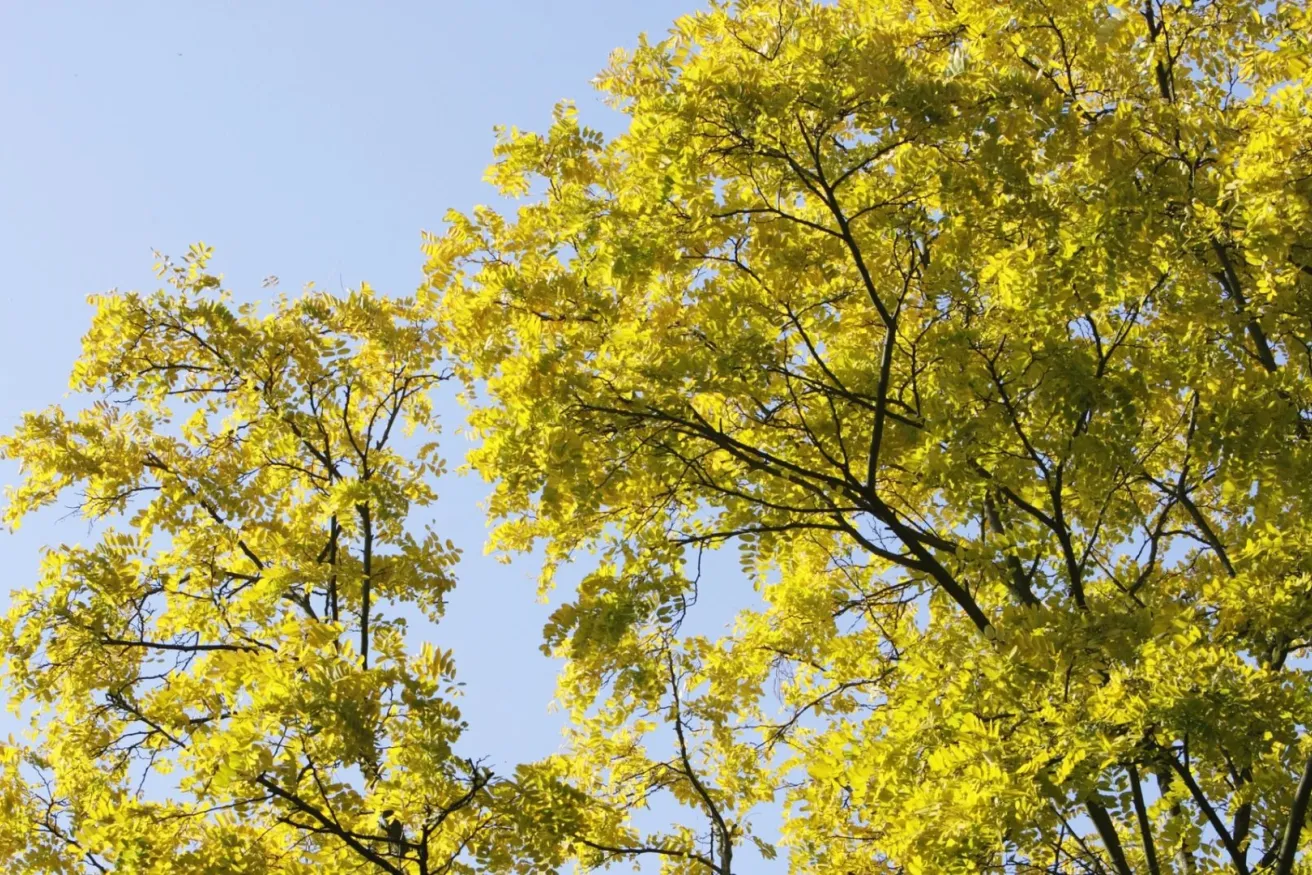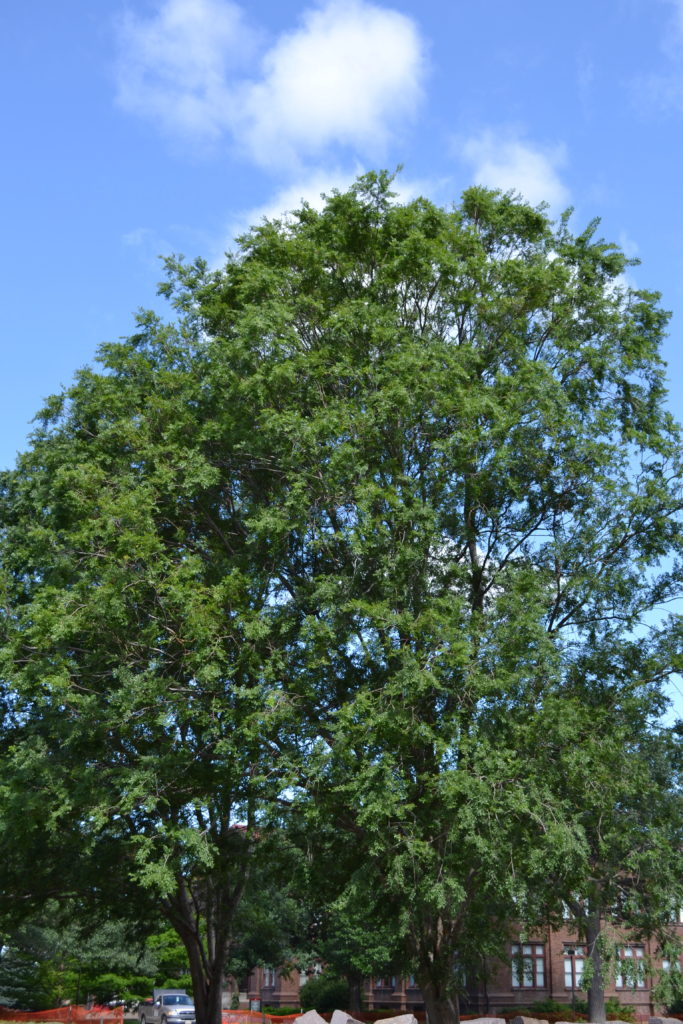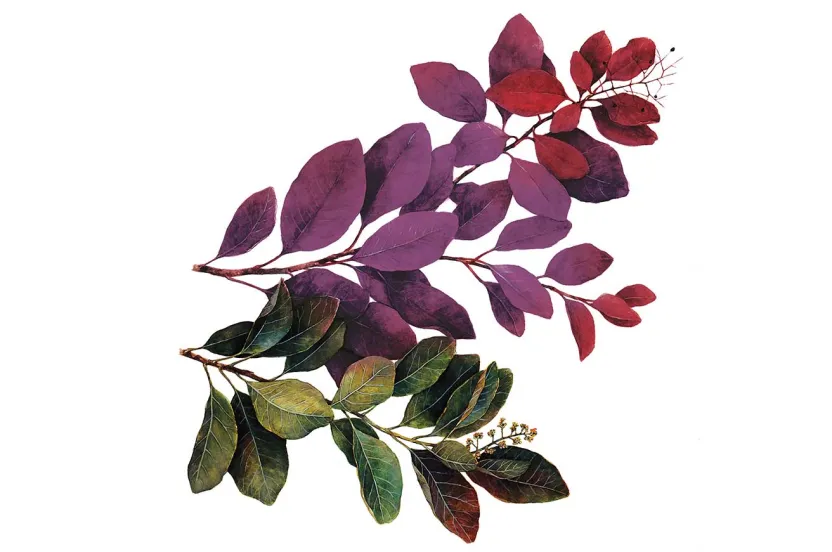Now live: The 2025 Canopy Report. Learn how Americans see trees. GET THE REPORT
Gleditsia triacanthos form inermis
One of the most startling trees to encounter on a walk in the riparian woodlands of the east and Midwest is our native honeylocust, Gleditsia triacanthos. It just can’t be missed. No other tree is guarded by such a mass of sharp, branching thorns, some of them as long as a foot in length. They are truly ferocious.
Fortunately for our community forests, someone noticed that some of the trees had all the other characteristics of honeylocust — except the nasty thorns! Scientists and plant breeders found that while the thornless honeylocust is distinctly different from honeylocust in the not-so-minor matter of thorns, it is not otherwise different enough to be classified as a separate species. Moreover, offspring from the thornless trees will sometimes have thorns. This twist of genetics has led botanists to classify thornless honeylocusts as a form of honeylocust, or “a seedling variation where a percentage of seedlings exhibit a distinctive characteristic.”
The thornless honeylocust has captured the hearts of arborists, community foresters and homeowners throughout America. It is a tree widely planted in communities as it is one of the toughest, most tolerant urban trees to be found. Many regions in the South once referred to honelocusts as Confederate pin trees because those thorns were used to pin uniforms together during the Civil War.
A Sweet Name
Honeylocust was once called sweet locust and may still go by that name in parts of the U.S. Honeyshucks was also a name given to the tree by some country folks. The sweet tone of these names comes from the fleshy inside of fresh seedpods. The pulpy material was once chewed by farm boys and is still chewed by cattle when they can find it. But we don’t recommend trying it, as the seeds in the same pod can be toxic.
The “locust” part of the name apparently comes from the rattling sound made by some members of this tree group when the seedpod has dried. To somebody’s ear, these sounded like the insect locust. Then again, it has been suggested that since John the Baptist dined on honey and locusts, that these terms were collapsed and applied to the tree with the sweet seedpods.
The scientific names are much clearer. The species was first described in the mid-1700s by the Swedish botanist, Karl von Linné. He gave it the genus name Gleditsia in honor of J. G. Gleditsch, a German botanist at the time. The species name, triacanthos, is from the Greek for “three” and “spine,” referring to the thorns of honeylocust that often are three-branched. The Latin designation for the thornless form of the tree is appropriately, inermis, meaning “unarmed,” or when applied to plants, “without prickles or thorns.”





